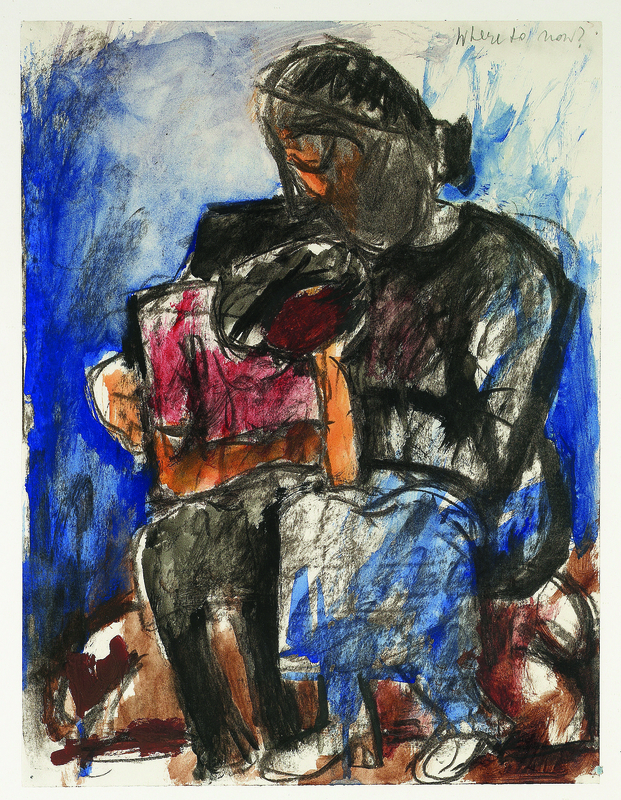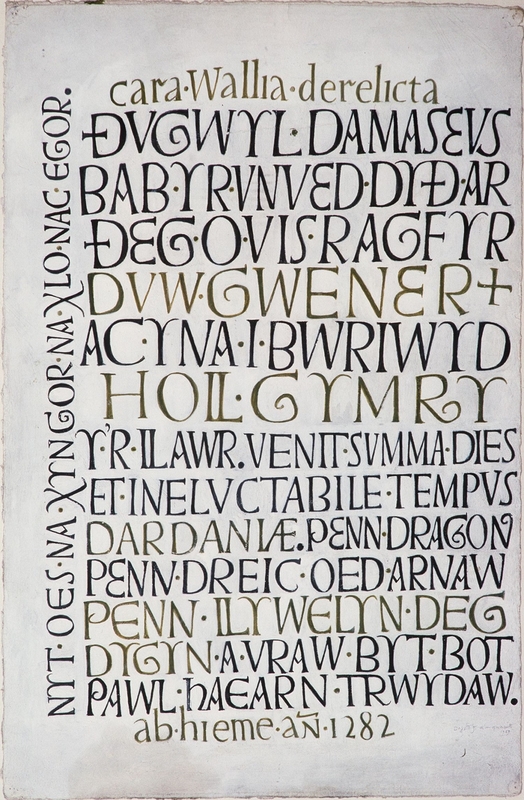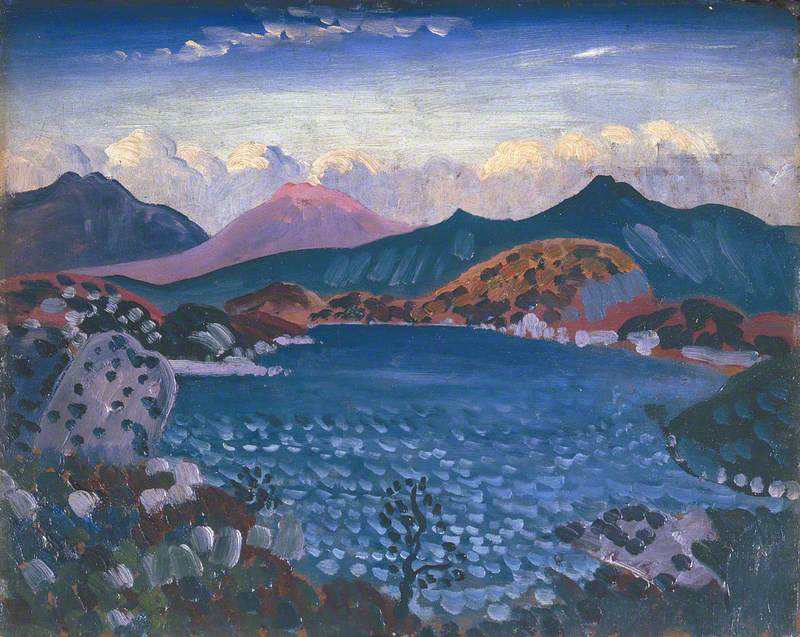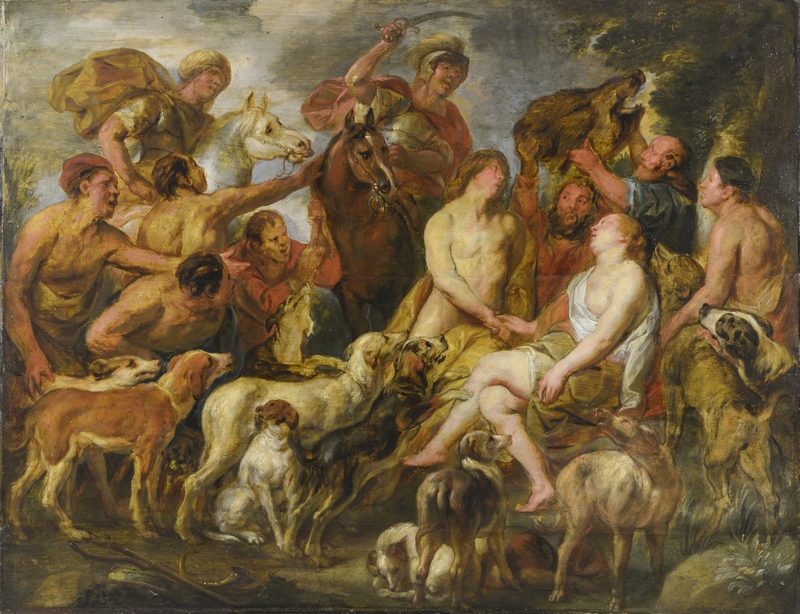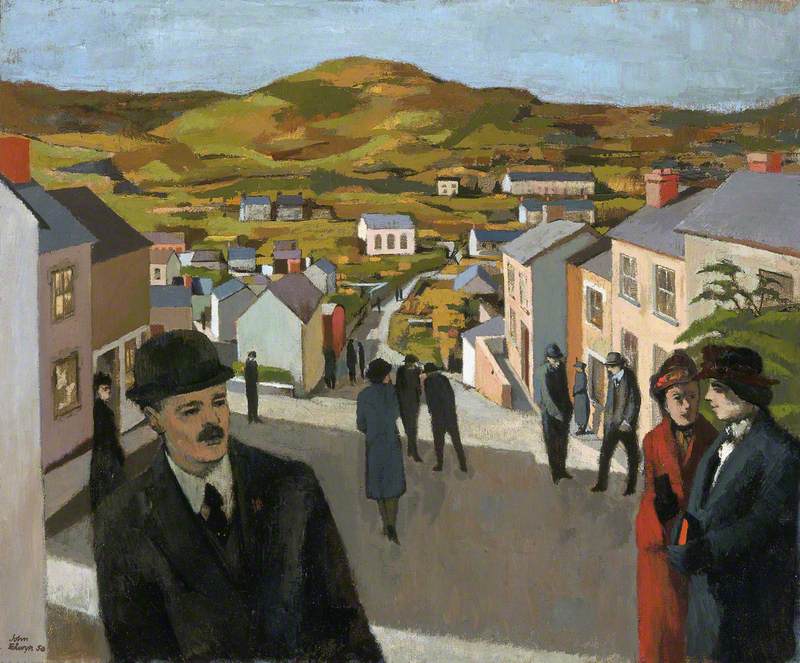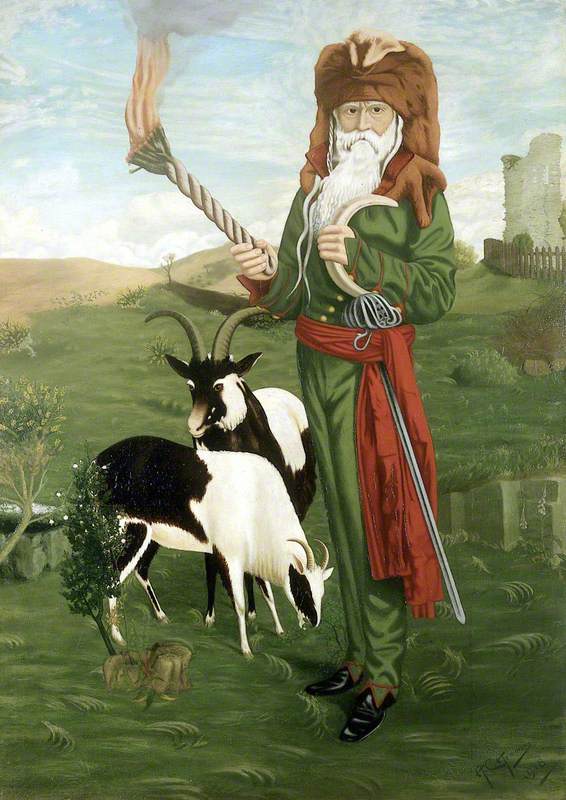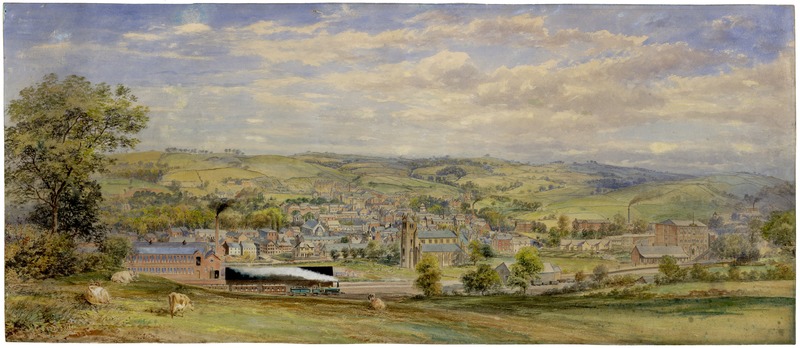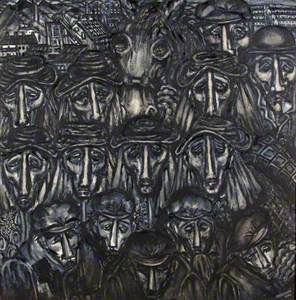Valleys Re-told is a co-created art and heritage engagement programme with an emphasis on sharing and celebrating the art and heritage of the South Wales Valleys. The vision is to bring together a national collection of art that reflects the people, culture and identity of the south Wales Valleys, creating a treasured accessible resource for the future.
Amgueddfa Cymru is working in partnership with Cyfarthfa Castle Museum & Art Gallery in Merthyr Tydfil and Cynon Valley Museum Trust in Aberdare, two well-established museums in the South Wales Valleys. This way of working has created an openness towards sharing collections and cultivated a trusting working relationship with communities and schools.
We invited participants from Cynon and Merthyr Valleys to respond to some of their favourite artworks from the project. Here is the Valleys Re-told, in their own words!
Klara Sroka, Community and Engagement Officer, Amgueddfa Cymru
1. Caradog by William Goscombe John
Griffiths Rhys Jones (1834–1897), 'Caradog'
1920
William Goscombe John (1860–1952) 
I was born and bred in the Cynon Valley, brought up in a musical family. My mother, father and older brother were in choral societies all their lives. When I look at the statue of Caradog in Aberdare, fond memories come flooding back to the time when our valleys resounded with wonderful music. I feel so privileged to have been a part of it.
Choral societies and male voice parties abounded in those days, performing the great oratorios and concert pieces. Victorian and Edwardian ballad singers also sang their solos and duets. The ability to sing in them was a highly valued asset. The statue of Caradog seems to me to be a lovely visual reminder of a wonderful vibrant culture that once filled our valleys.
Howell Thomas, ex-colliery electrician at Penrikyber Colliery, Cynon Valley
2. The Court Hounds by William Richard B. Shaw
The Court Hounds
1830s or 1840s (?)
William Richard B. Shaw (c.1813–1882/1883) 
The Court Hounds is a prominent piece within the Cyfarthfa collection. The piece depicts members of the Cyfarthfa hunt and their dogs. This relates to the original use of the land of 'Cyfarthfa' as long-established hunting grounds. It's striking that whilst the land would have been inundated with iron works and mines, there are still natural green landscapes within a stone's throw of mass industry. Based on the iconic landscape in the background, the painting is situated within or near Bannau Brycheiniog.
The piece also showcases elitism and wealth through the 1830–1840s through costume and lifestyle, but also opens opportunity for conversation around how life has changed, or if there is anything familiar within the piece that could relate to personal cynefin.
Charlotte Barry, Education and Interpretation Officer, Cyfarthfa Castle Museum & Art Gallery
3. Penydarren by John Uzzell Edwards
Living in 1950s Penydarren, this painting immediately takes me back in time to how it actually was, reminiscent of those grey, almost monotone, winter evenings, just as the light was fading, so common in the South Wales Valleys. The houses are of different styles with undulating pavements, old railings and uneven steps giving access between the pine ends of houses. Lacking uniformity, the buildings were huddled together haphazardly due to the hilly terrain, which is exemplified by the painting's composition.
The gas lamps gave off an eerily, disconcerting yellow hue, flickering unnervingly, a dark yellow ochre within a pallid halo around the lantern. Their light rarely extended from one lamp to the other, a section of broken pavement always seemed to fall in dark shadow.
Roger Lewis, ex-Cyfarthfa pupil and headteacher
4. The Great Depression by David Lewis
'Déjà Vu'
Street people soaking up warm sunshine
slumbering as best they can
as people busy themselves around them
often without acknowledgement
An enduring picture where the rhetoric remains
albeit cloaked in a different guise
the Great Depression then now
the Cost-of-Living Crisis and Recession.
Past errors remain and lessons continue unheeded
food-banks the new plague that punctures
the fabric of our seemingly advanced age
We witness the disintegration and
deconstruction of society around us
the gulf between have and have nots deepens
with extremist views seeking out their prey
Could future generation do better –
we sincerely hope so.
Kathryn Jones, poet, Cynon Valley
5. My Mother was a Pit Girl by Nicholas Evans
I've always admired paintings that in their creation feel manipulated by more than brushes. This has a rough handling implying more than dry brush work: application via dried rags? Fingers?
The compositional structure is a series of rhythmically produced verticals evident in the noses, the horse's face and the buildings of industry. All squeezed together. It tells you that industrial Valleys life was close and grubby. The picture is densely packed like valleys terraced housing, full as a train on match day, crammed like a Labour club funeral wake.
The painting captures industry, possibly something of the artist's own experience. But does not feel lived in. There's nostalgia in the painting. A nostalgia that wouldn't be there if one coughed from black lungs while painting.
Adam John Griffiths, artist-in-residence at Pen-y-Dre High School, Merthyr Tydfil
6. Haggar's Cinema, Aberdare by Ernest James Excell
As the Collections Manager for Rhondda Cynon Taf County Borough Council Heritage Service, I have had the pleasure of handling this item. It was recently loaned to St Elvan's Church for a display celebrating local cinema pioneer, William Haggar, for the Cynon Valley film festival. Seeing this artwork up close, you notice the depth of colours – the overall sepia tone suggests the scene is set at either sunrise or sunset. I believe these yellow and orange tones create the 'cosy' feeling you experience when being in front of a cinema screen.
Also, I have carried out research on the Jewish communities in Rhondda Cynon Taf and discovered that the Haggar's Cinema was taken over by Victor Freed Ltd. Victor Freed was a Jewish businessman who had a successful musical instrument and furniture business. Thus, this building has lived multiple lives and served multiple functions for its community.
Rhian Hall, Collections Manager, Rhondda Cynon Taf County Borough Council Heritage Service
Reaching wider audiences
Since the start of the Valleys Re-told project, we've engaged with over 400 adult participants, 160 schoolchildren and 60 students from local colleges. We've also been developing the project's presence on digital platforms. There is a series of eight vlogs that allow viewers to see behind the scenes of a working gallery, meet the partner museums, watch children curate their own collections and view all the art exhibitions made by participants.
As the project ends, it will be hosting its final community exhibition of artworks from Amgueddfa Cymru in April 2024 in Penrhiwceiber, where the community from Lee Gardens Pool Committee in the Cynon Valley will be exhibiting 21 loaned artworks, including many artefacts of their own in a public art trail, from 8th to 19th April 2024.
Penrhiwceiber Art Trail
illustrated by Eleanor Whiteman and the Lee Gardens Pool community, 2024 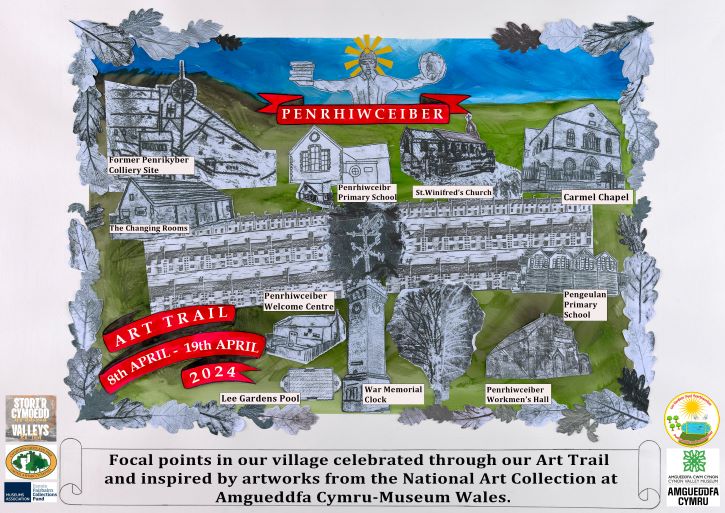
What next?
Further research into exploring LGBTQ+ stories and interpretations within the Valley's art collections will be continuing with various youth groups across Merthyr Tydfil and the Cynon Valley in the final phase of engagement, with all the new interpretations which have been exchanged over the past three years embedded within various platforms for public access. Stay tuned for more!
Contributions by Klara Sroka, Howell Thomas, Charlotte Barry, Roger Lewis, Kathryn Jones, Adam John Griffiths and Rhian Hall
The funding for Valleys Re-told has been provided by The Esmée Fairbairn Collections Fund – delivered by the Museums Association
The publication of this content was supported by Welsh Government funding





